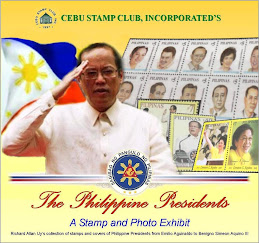Today in Philippine History (Philatelic Edition Series 2):
October 29, 1910
Antonio "Tony" Santos Velasquez (October 29, 1910 – April 22, 1997), was a Filipino illustrator who was regarded as the Father of Tagalog comics.
He was born in Ulilang Kawayan, Paco, Manila and his parents were Eusebio Velasquez, a native of Pangasinan and Andrea Santos of Cavite.
He studied at the Jose Rizal College and completed a correspondence course on illustration and drawing from the International Correspondence School in 1934.
Velasquez worked as a part-time illustrator for Banaag Press, a publishing company which later became Acme Printing in 1927 after Ramon Roces, a Filipino-Spanish businessman and publisher acquired it.
In 1928, he created the first serialized Filipino cartoon strip, 'Mga Kabalbalan ni Kenkoy' ('Kenkoy's Antics'). It appeared in the Tagalog-language Liwayway magazine on January 11, 1929. He created more than 300 cartoon characters such as Kenkoy, Tsikiting Gubat, Talakitok, Talimusak, Ponyang Halobaybay, Nanong Pandak, and Tinyente Dikyam.
Velasquez became the chief advertising artist at the Ramon Roces Publications, Inc. in 1935. His task included the designing of labels for Philippine products such as Tiki-Tiki Vitamins, Castor Oil, and Cortal, among others.
Along with such product label designs, he created cartoon characters that accompanied the advertisements for the products. These characters were Captain Cortal for Cortal, Nars Cafi for Cafi Aspirina, and Isko for Esco Shoe.
During World War II, although he refused at first, he was finally convinced by President Jose P. Laurel to use Kenkoy as a promotional tool for Laurel's health programs.
After the war in 1947, Velasquez retired from Liwayway magazine and created Ace Publication, a mass producer of Philippine comic books.
He founded Pilipino Komiks, the comic book that started the comic industry in the Philippines. Other comics produced by Ace were Tagalog Klasiks (1949), Hiwaga Komiks (1950), Espesyal Komiks (1952), Kenkoy Komiks (1959), and Educational Klasiks Komiks (1961).
Velasquez was forced to close Ace Publication in 1962 because of a labor dispute. He then established Graphic Arts Service, Inc. (also known as GASI Publications) and produced Pinoy Komiks and Pinoy Klasiks. Velasquez was the mentor of Filipino illustrators Francisco Coching (who later became a National Artist for Visual Arts in 2014), Mars Ravelo, Jose Zabala-Santos, and J. M. Perez.
In 1993, he received the "Gawad CCP para sa Sining" from the Cultural Center of the Philippines. His other awards were Best Komiks of the Year from Graphic Arts Service, Inc. (1963); Special Award from the Citizens Council for Mass Media (1971); Patnubay ng Sining at Kalinangan sa Larangan ng Makasining na Komiks from the City of Manila (1974).
Antonio "Tony" Velasquez died on April 22, 1997 and in 1998, he received posthumously, the Life Achievement Award from Komiks Operation Brotherhood.
(Design, concept, stamps and research: Richard Allan B. Uy) All rights reserved
Photo credit: x.com




















































